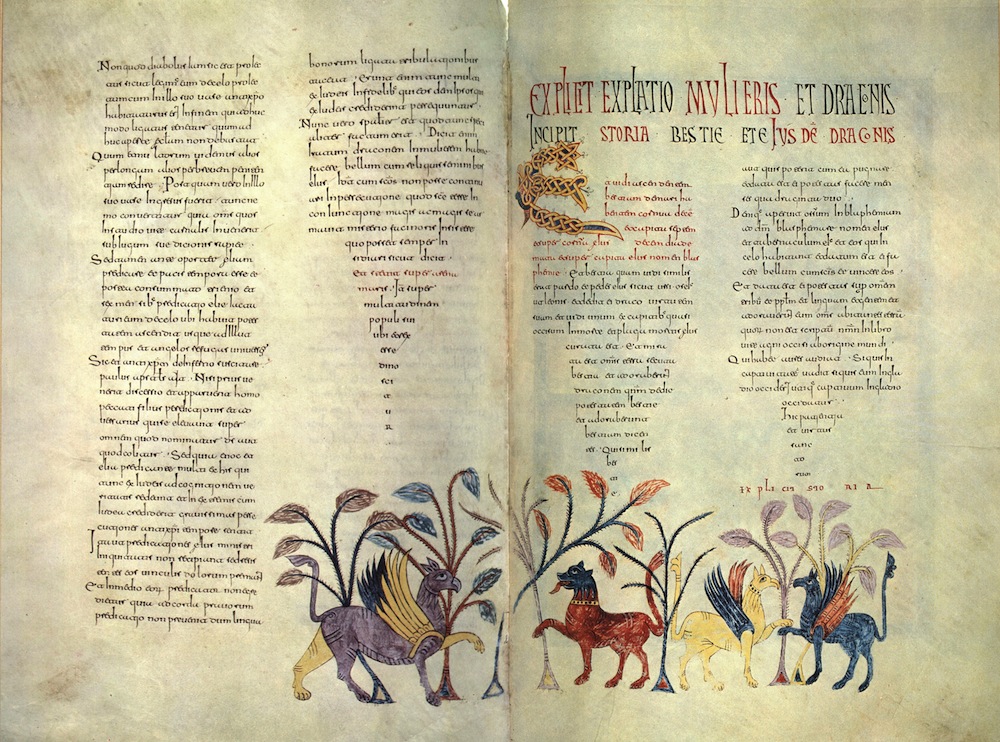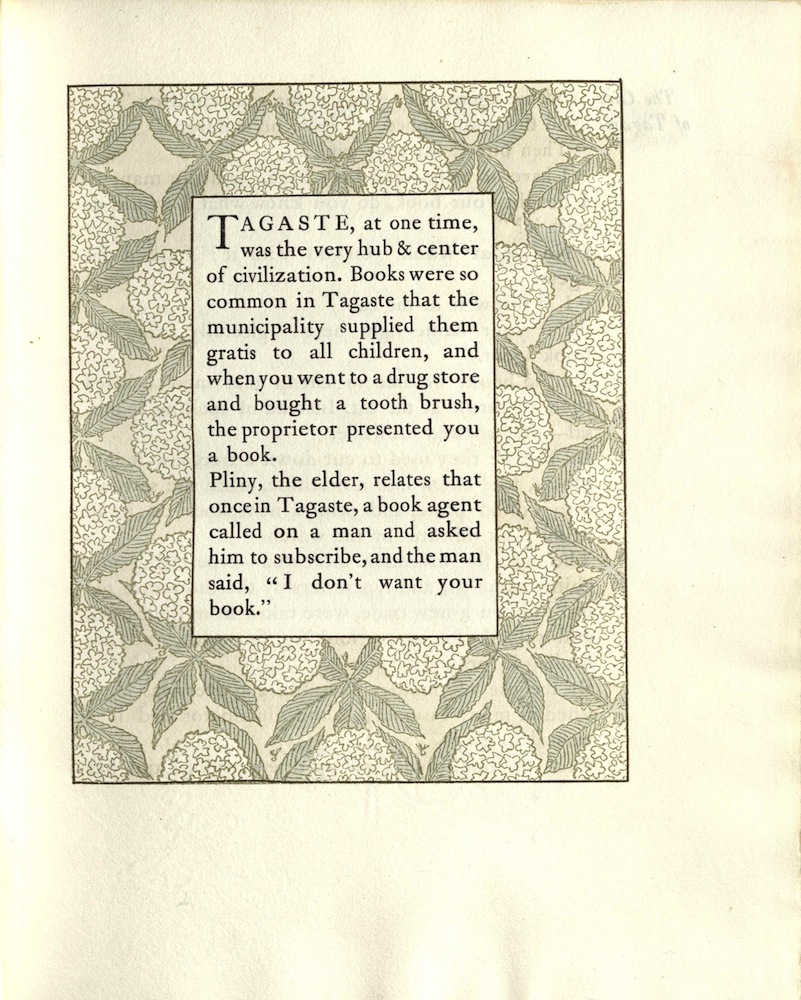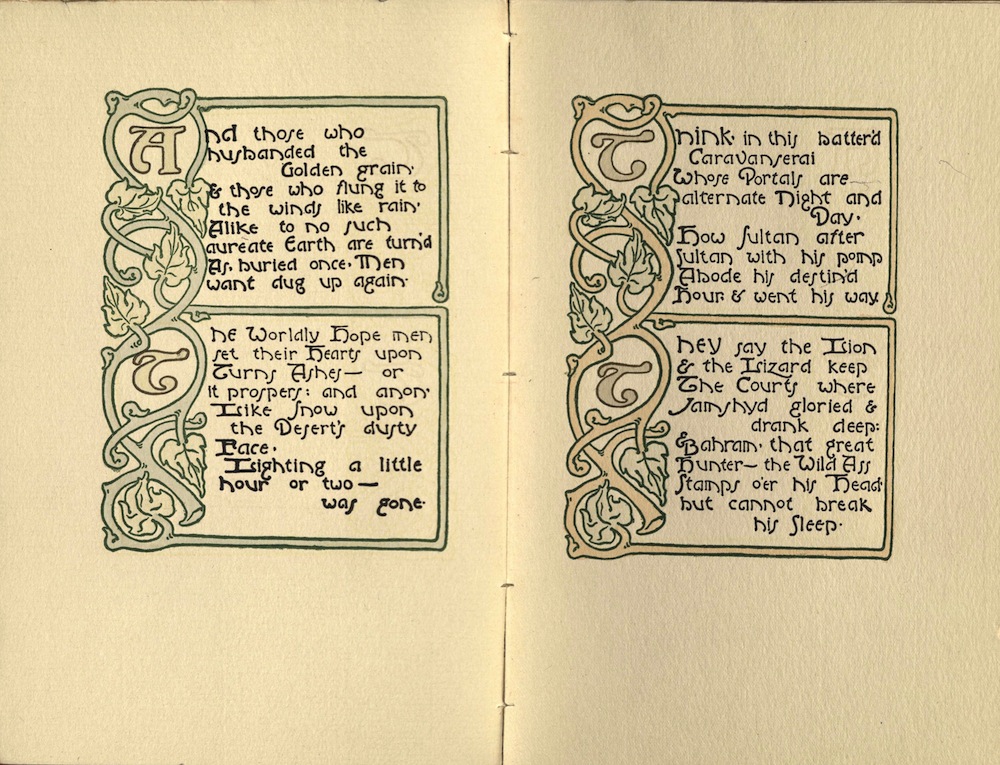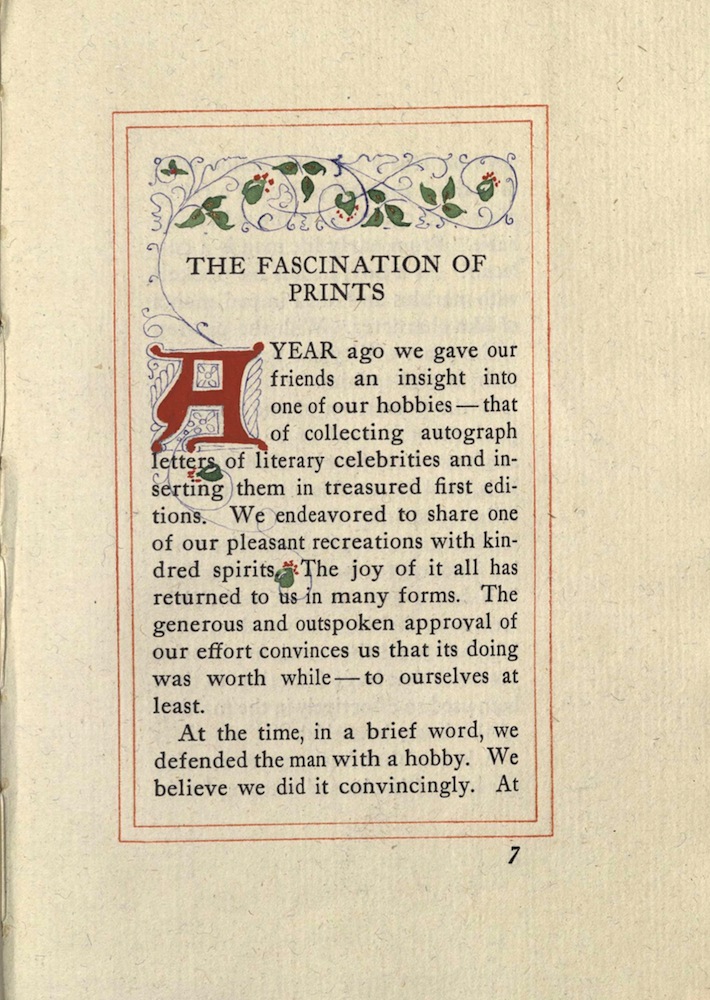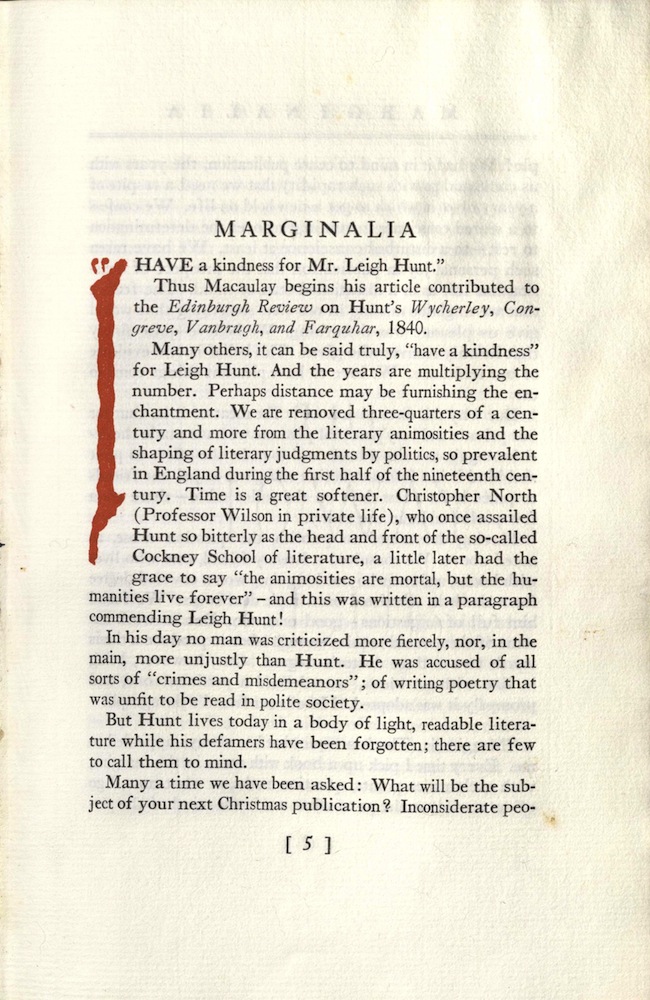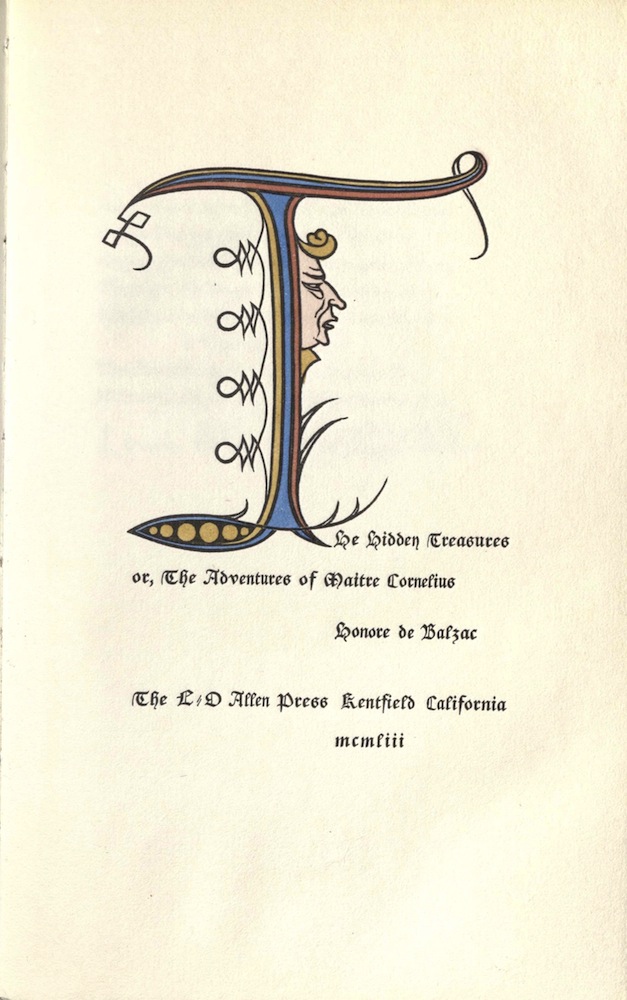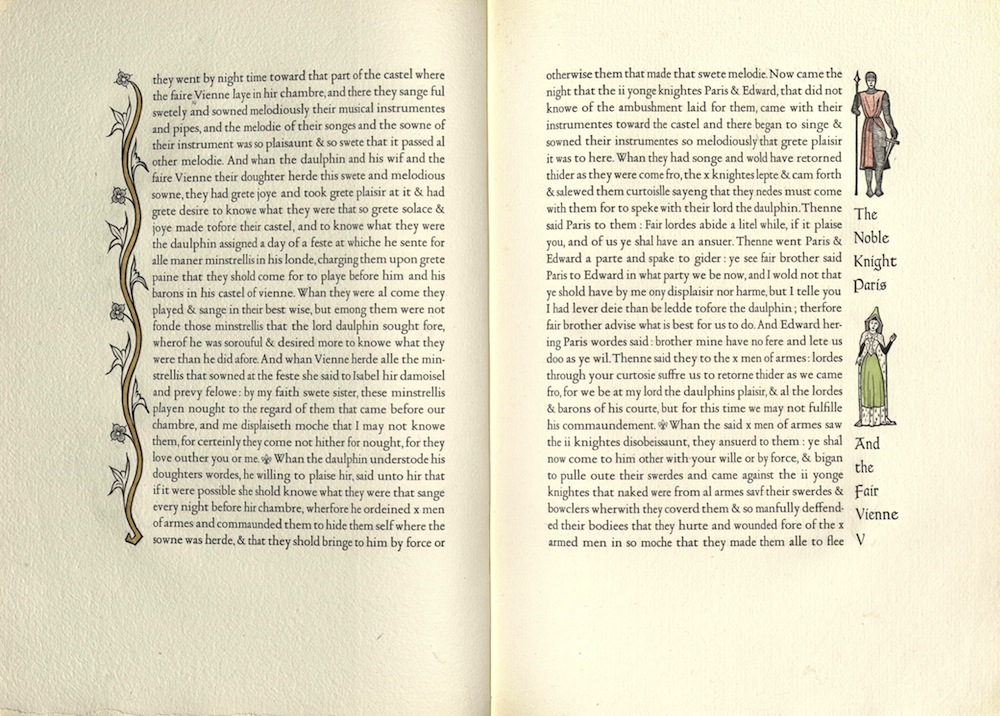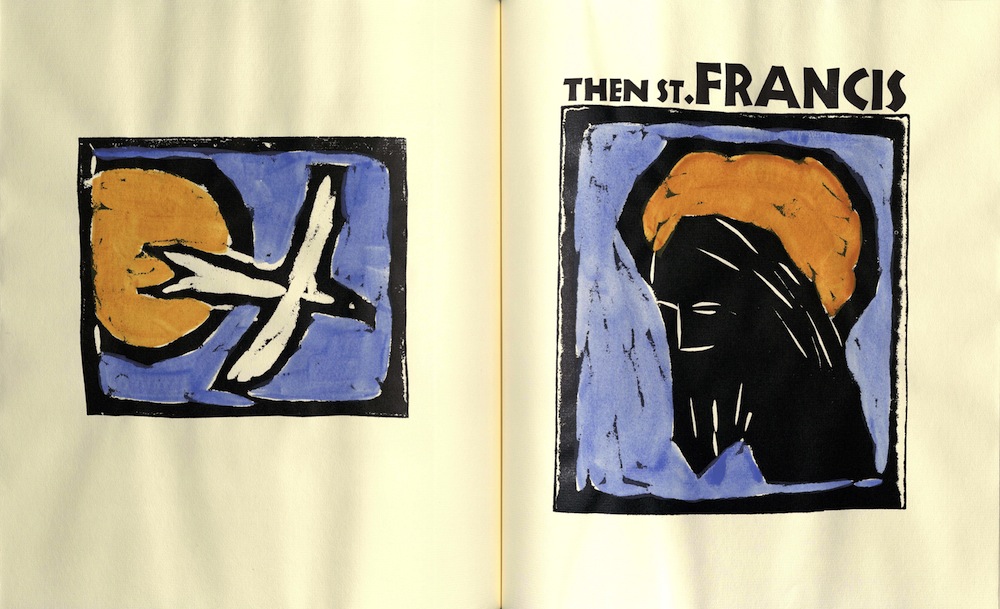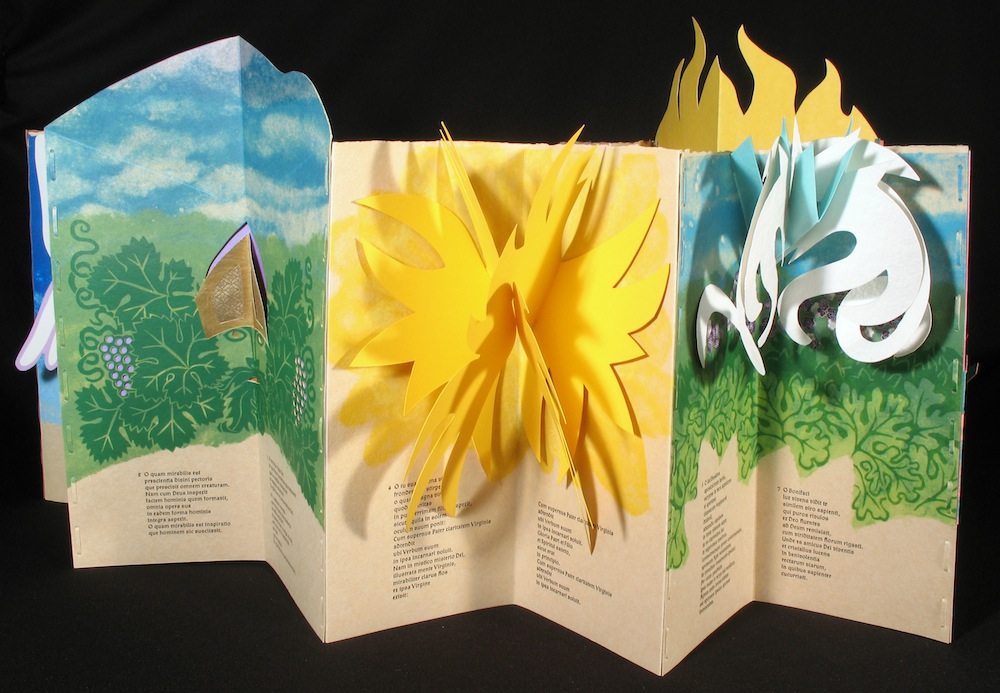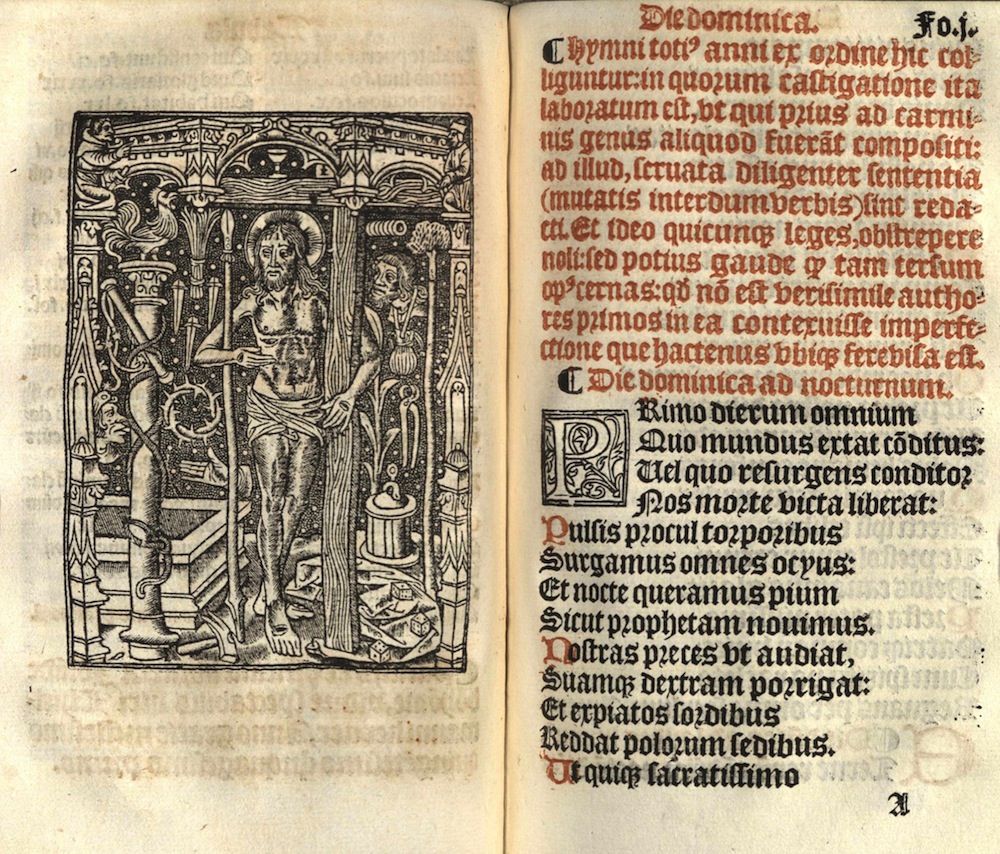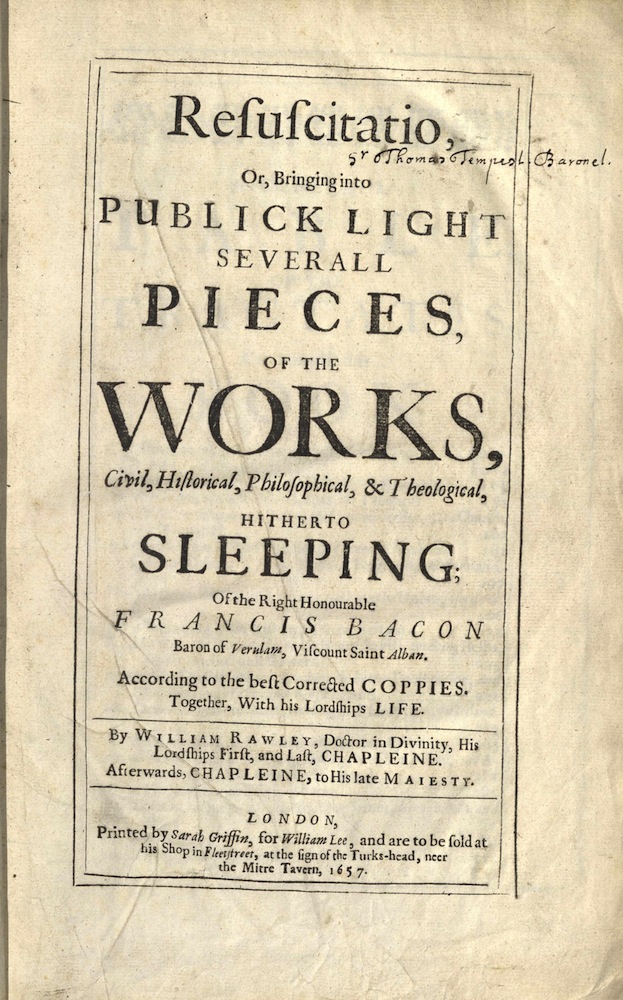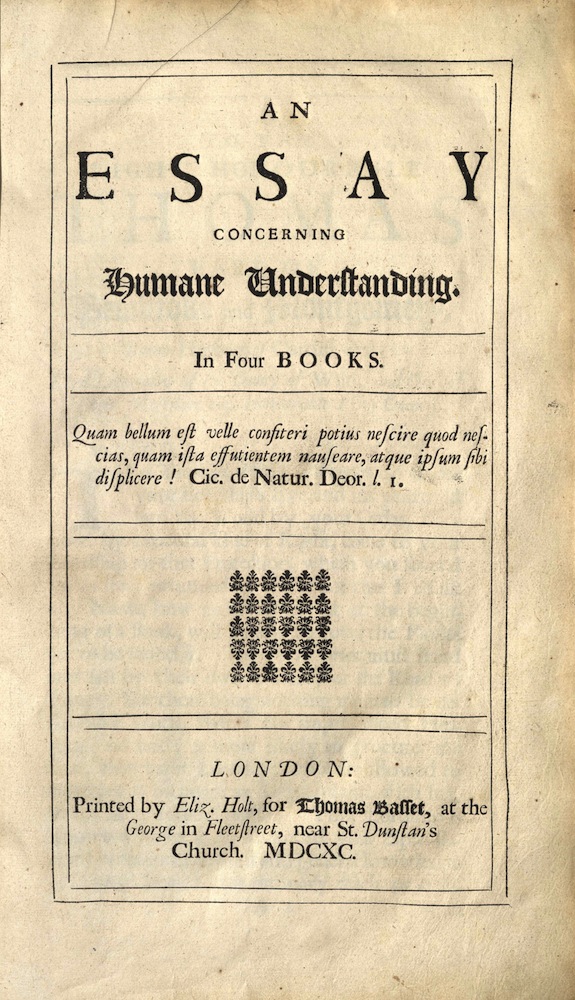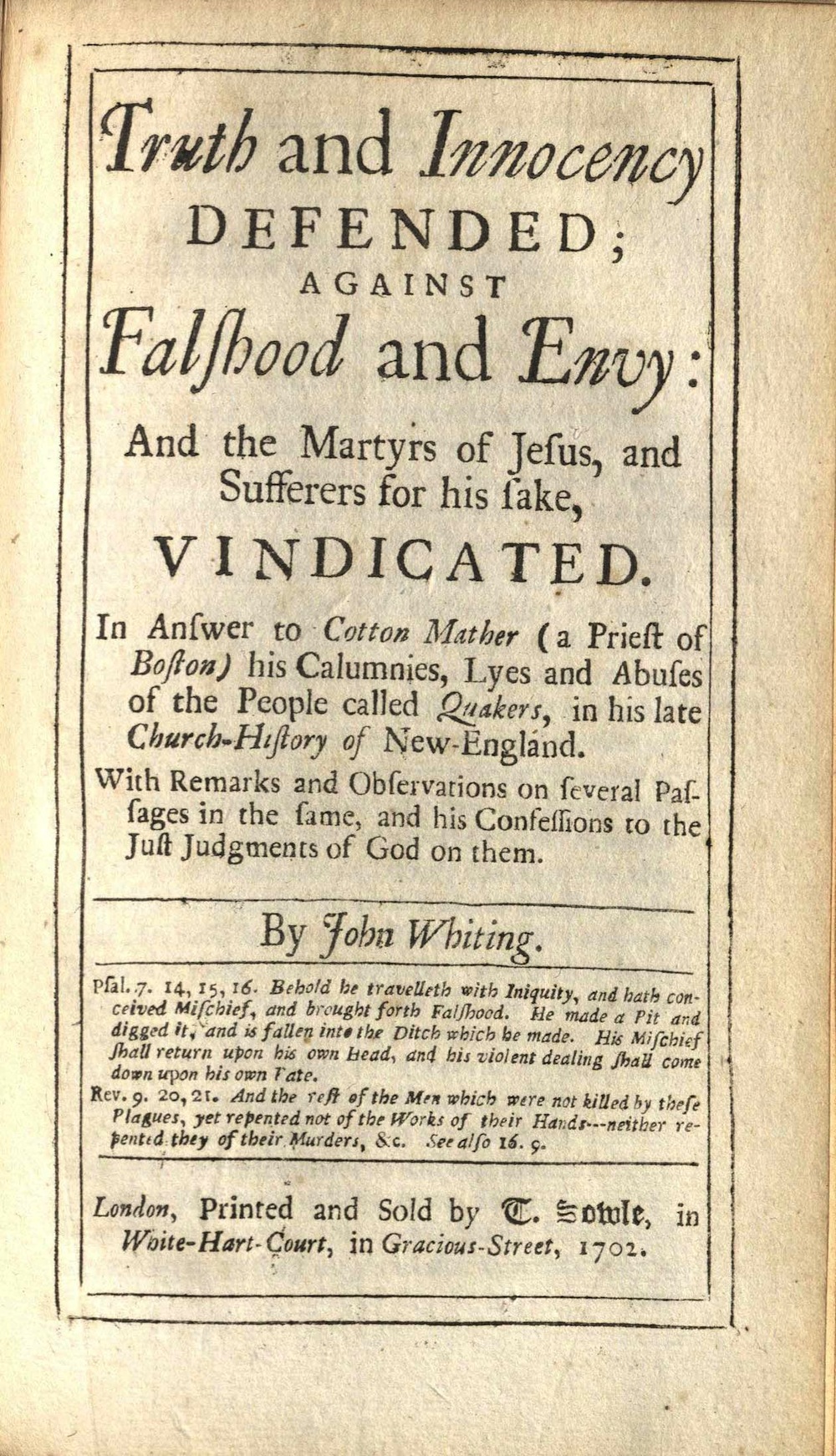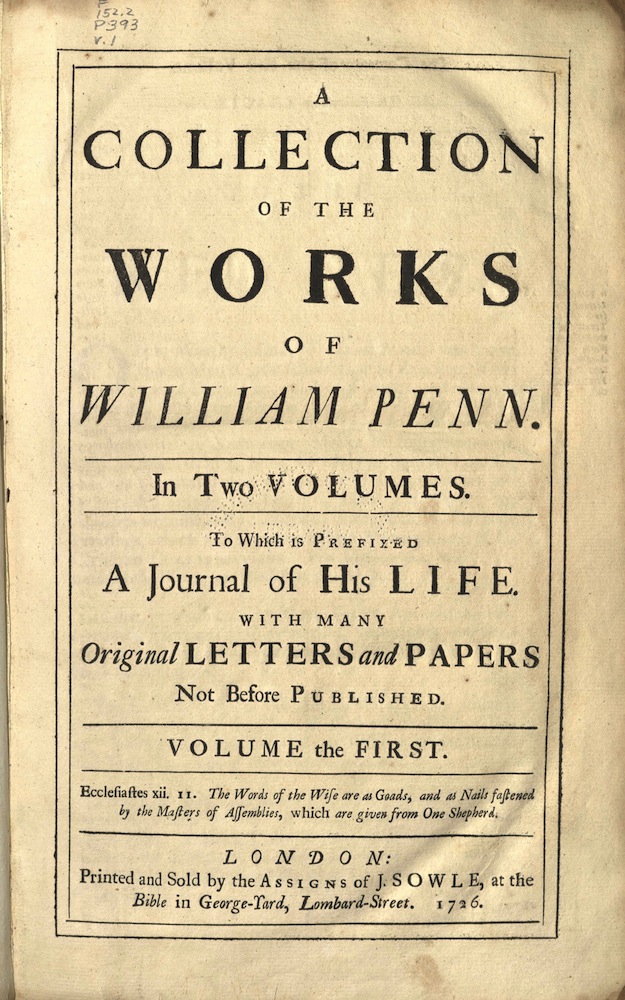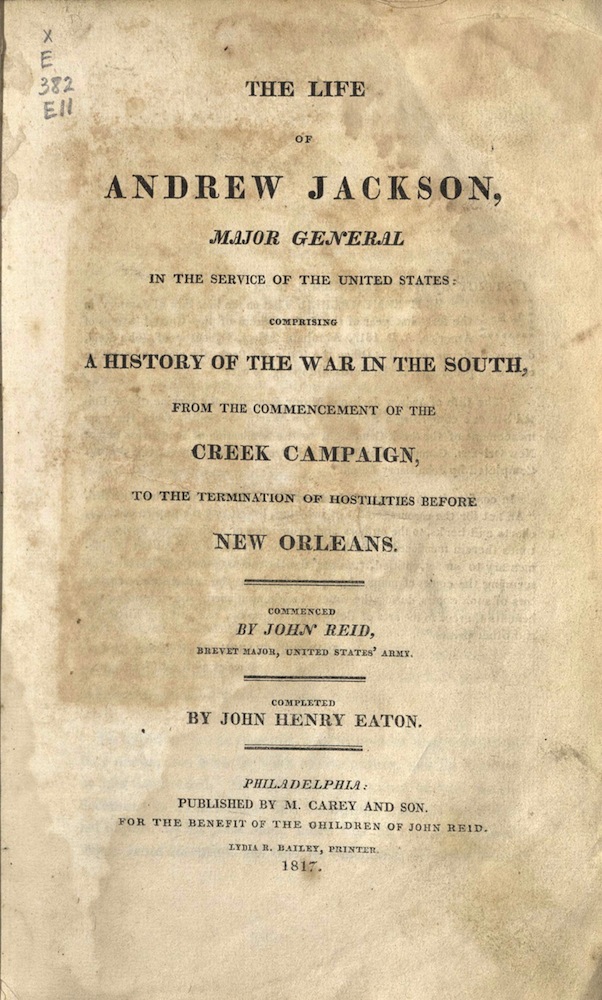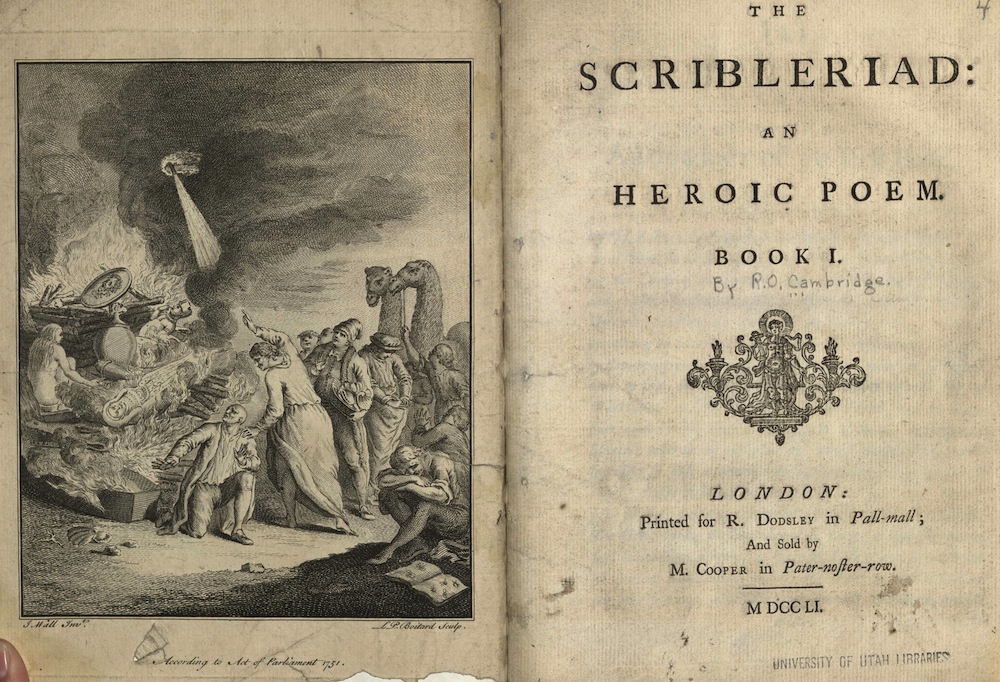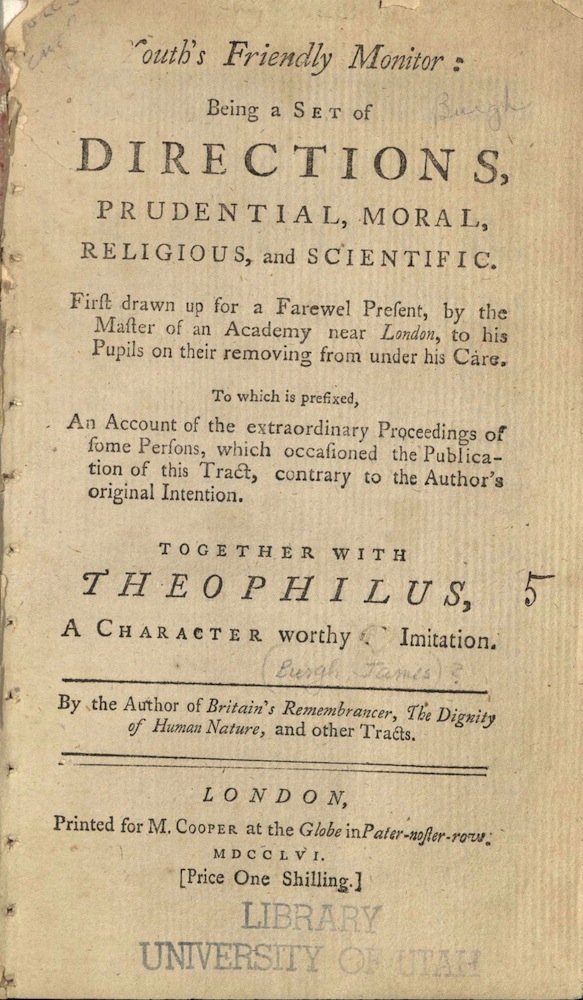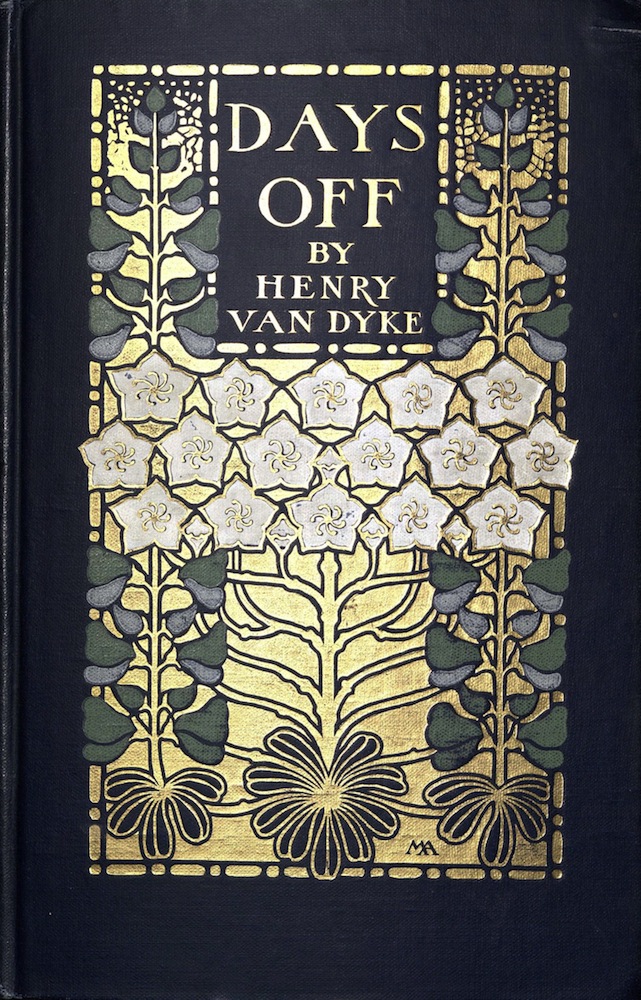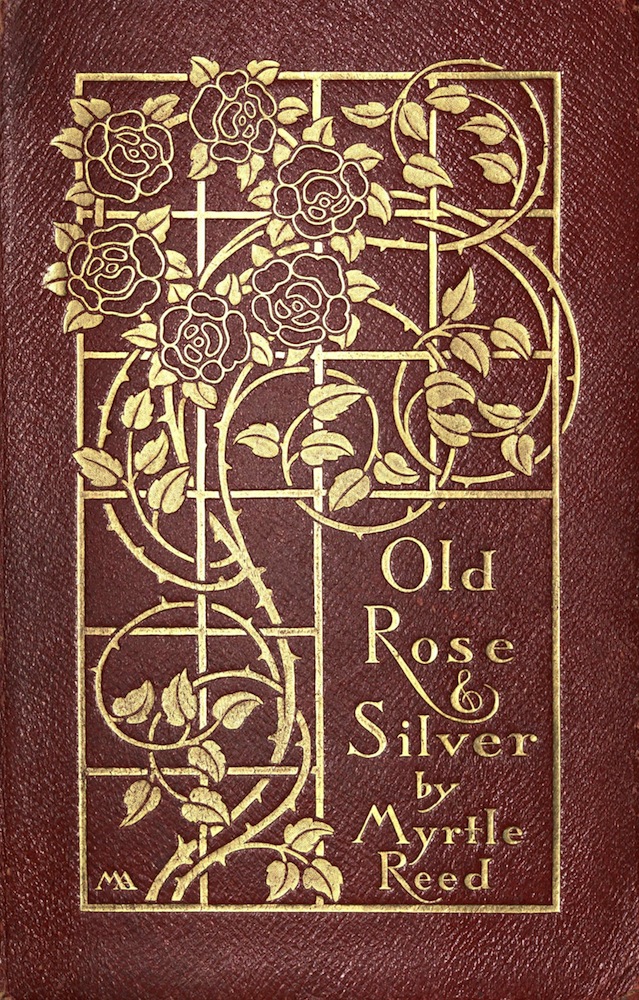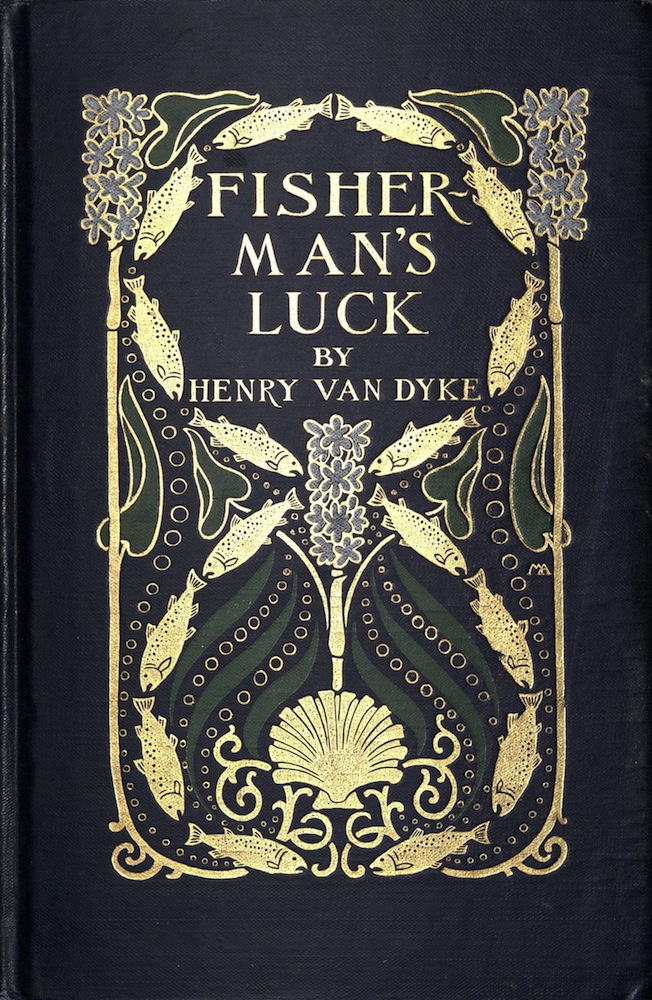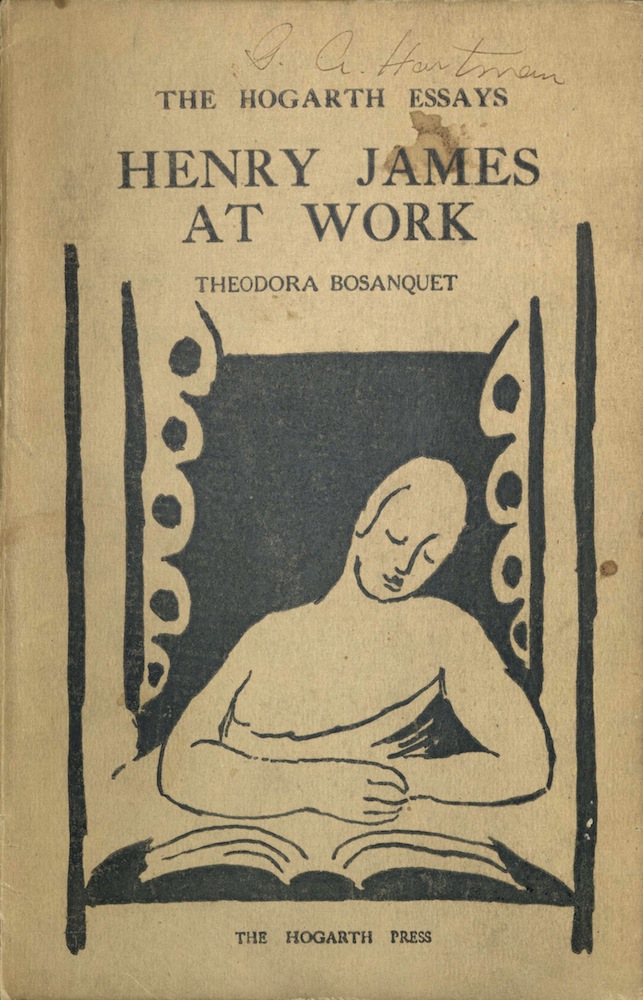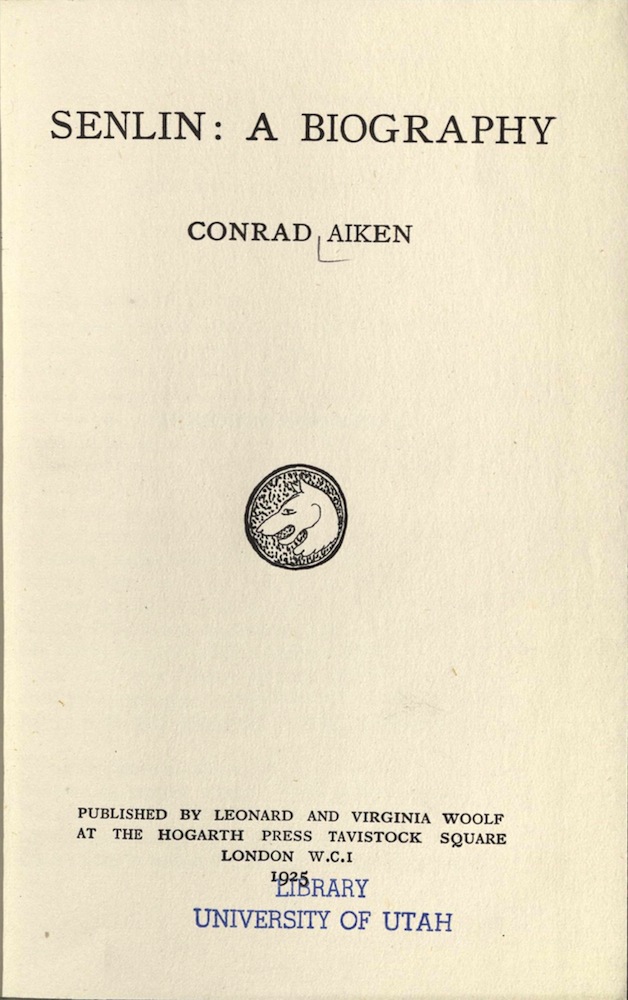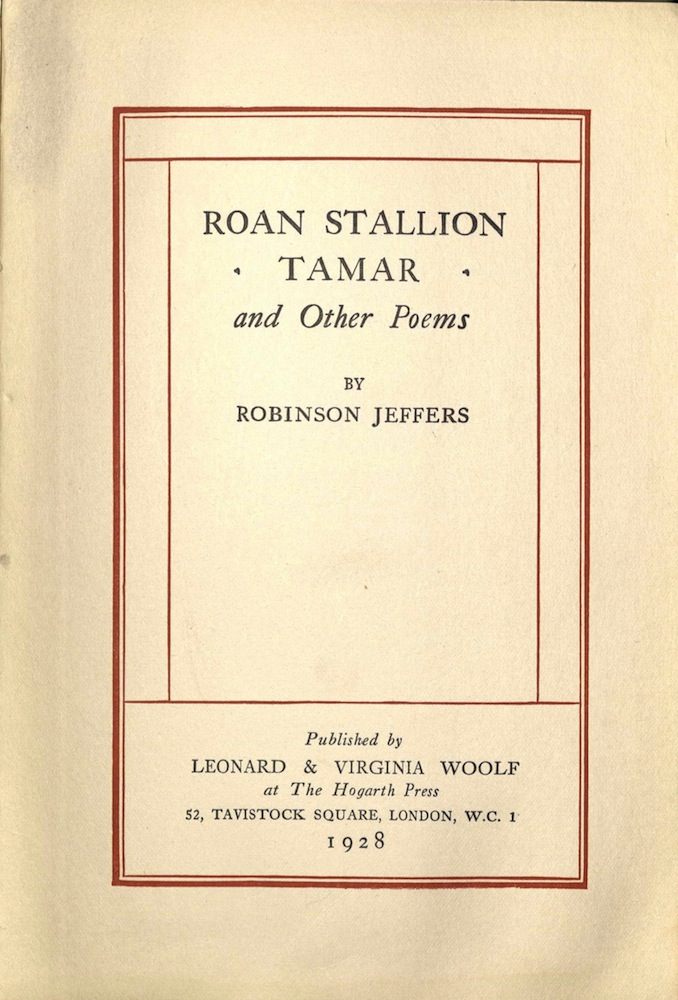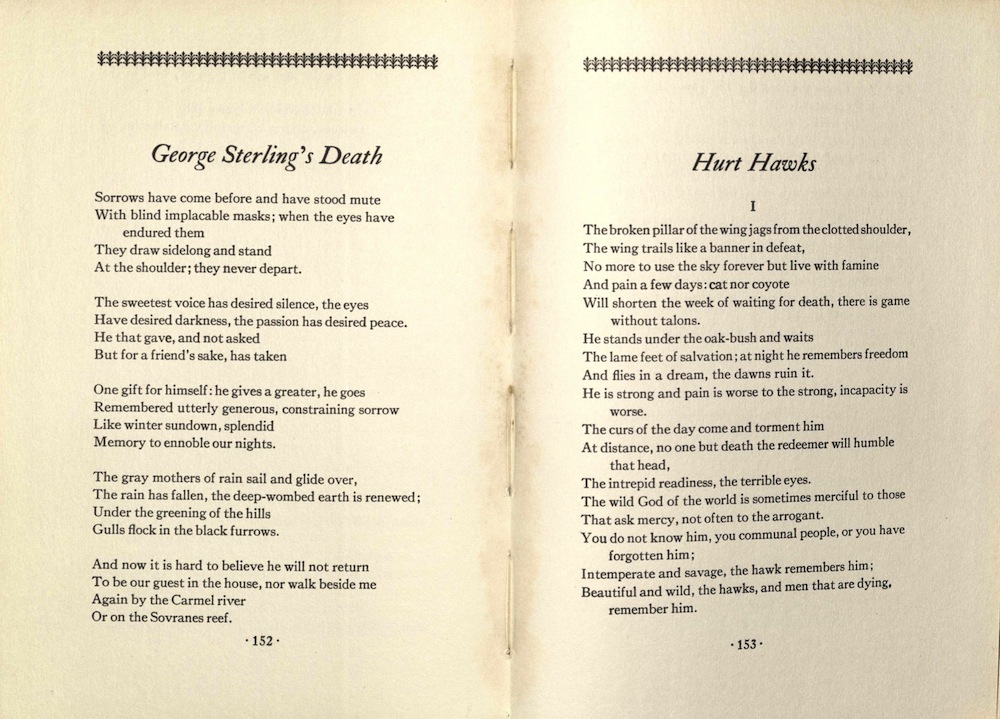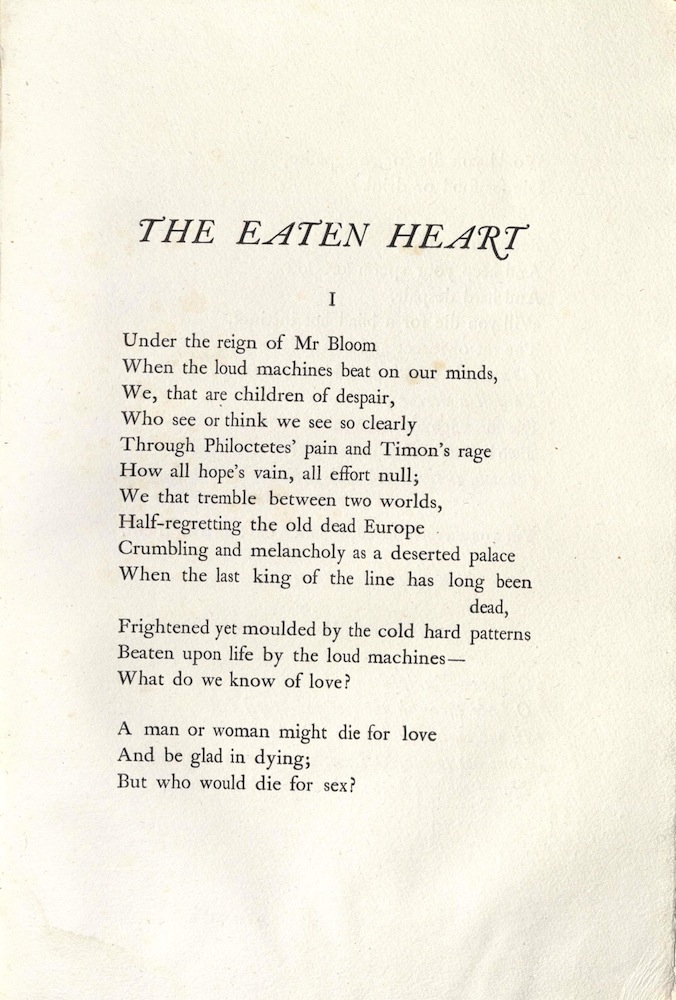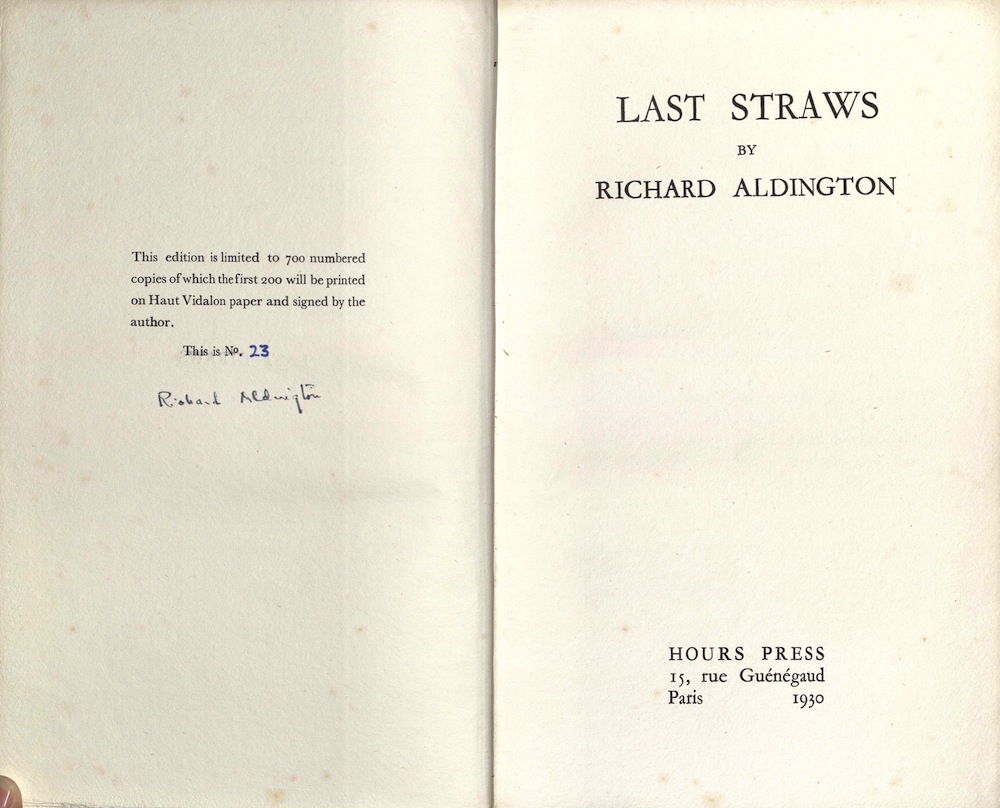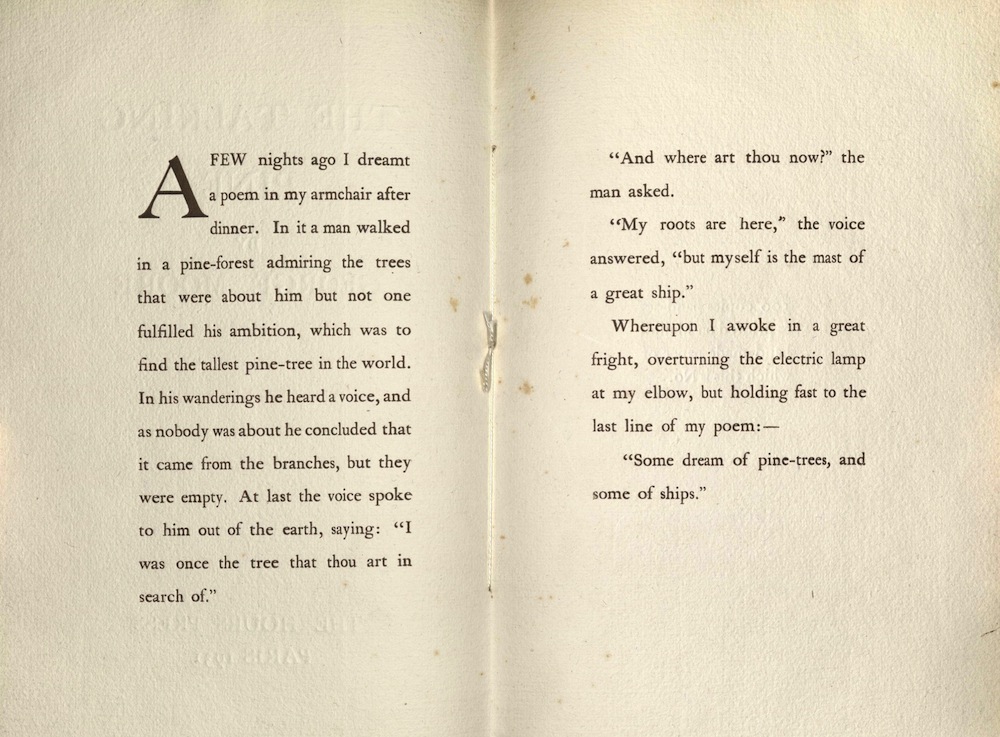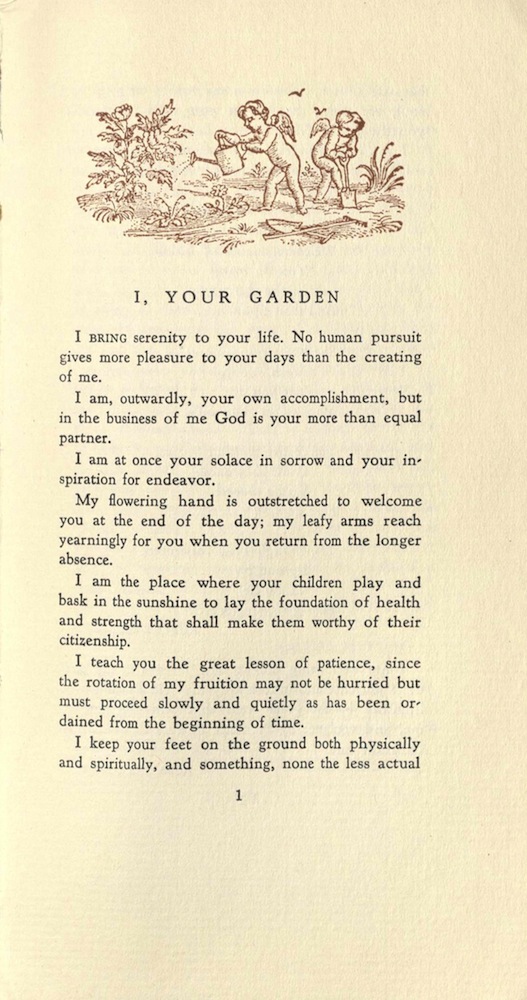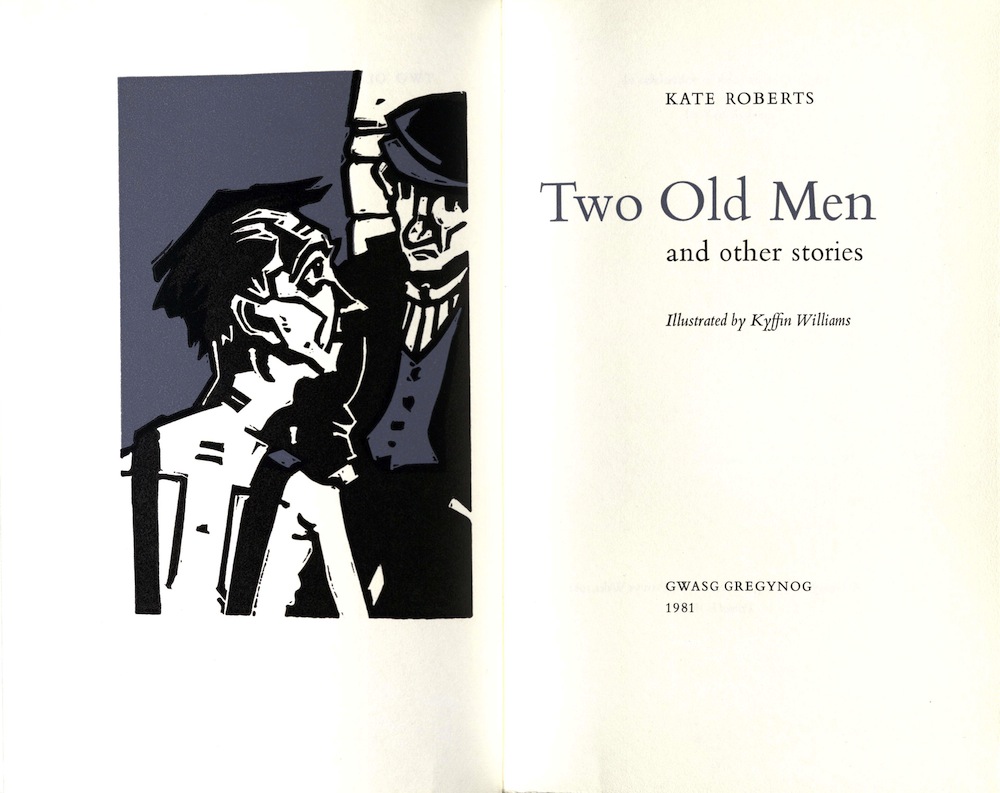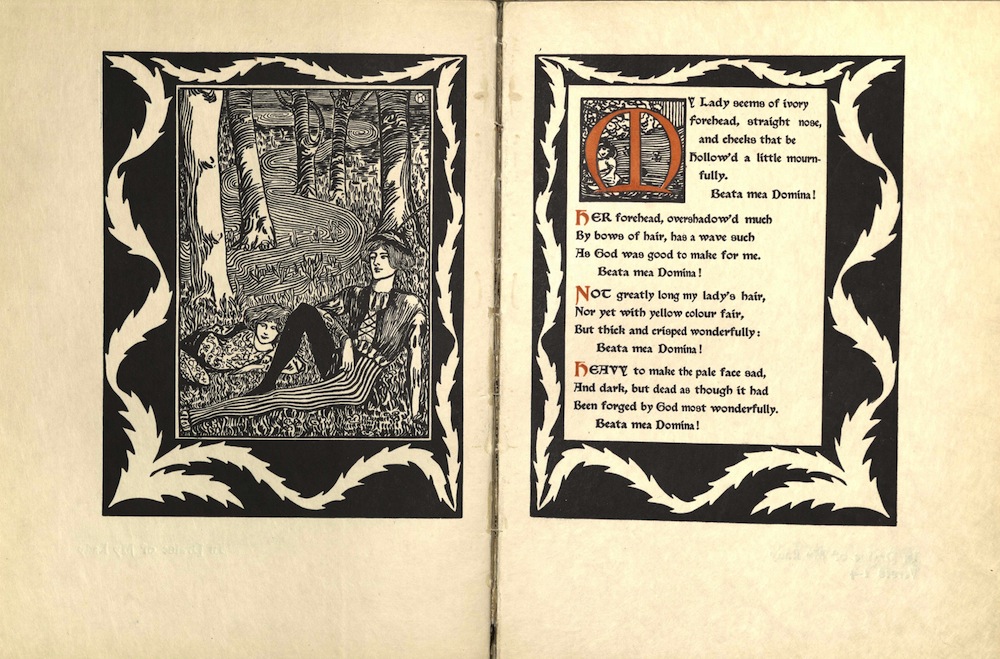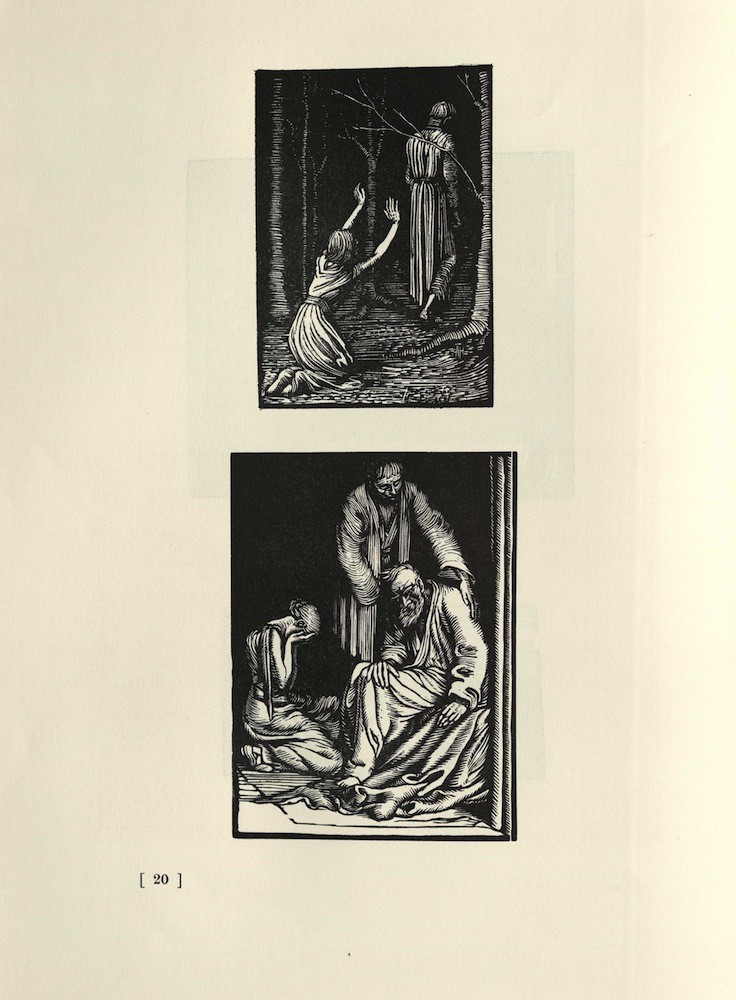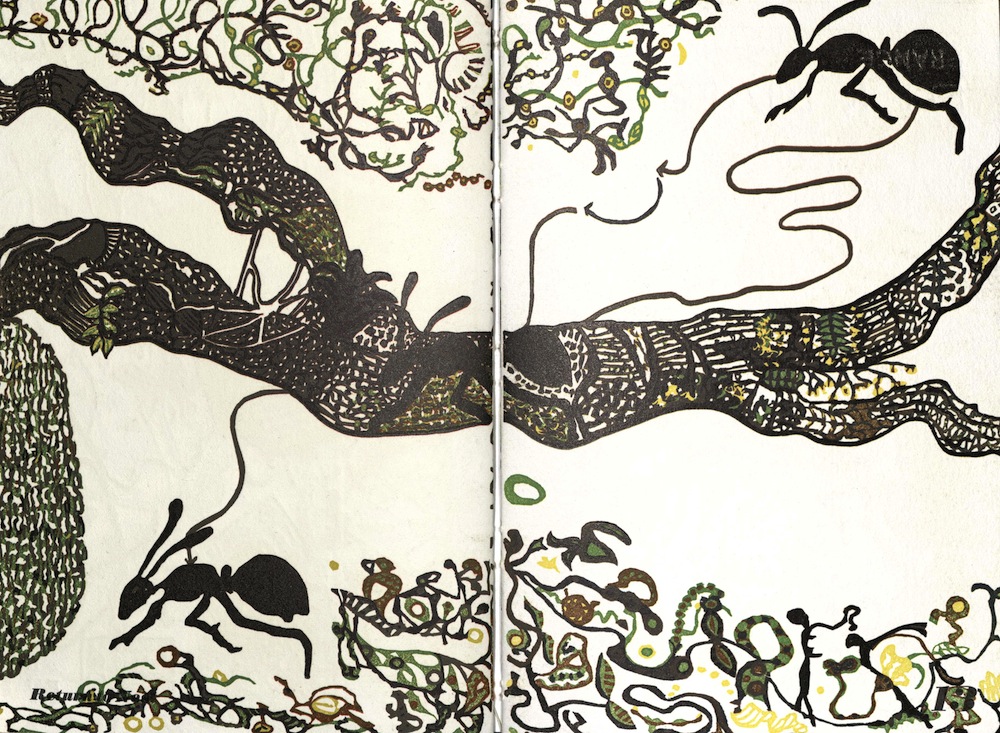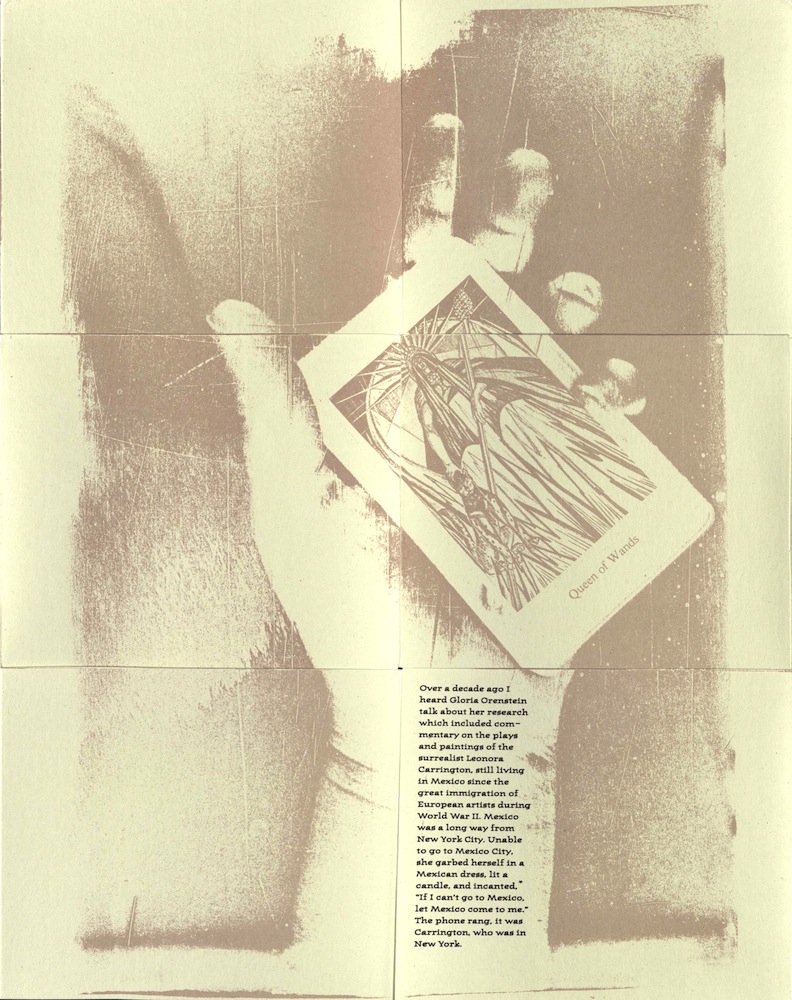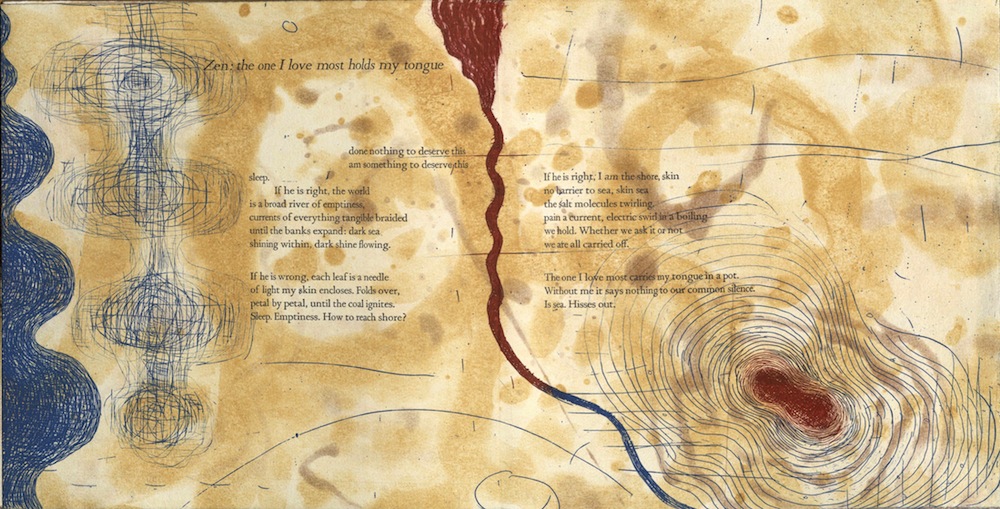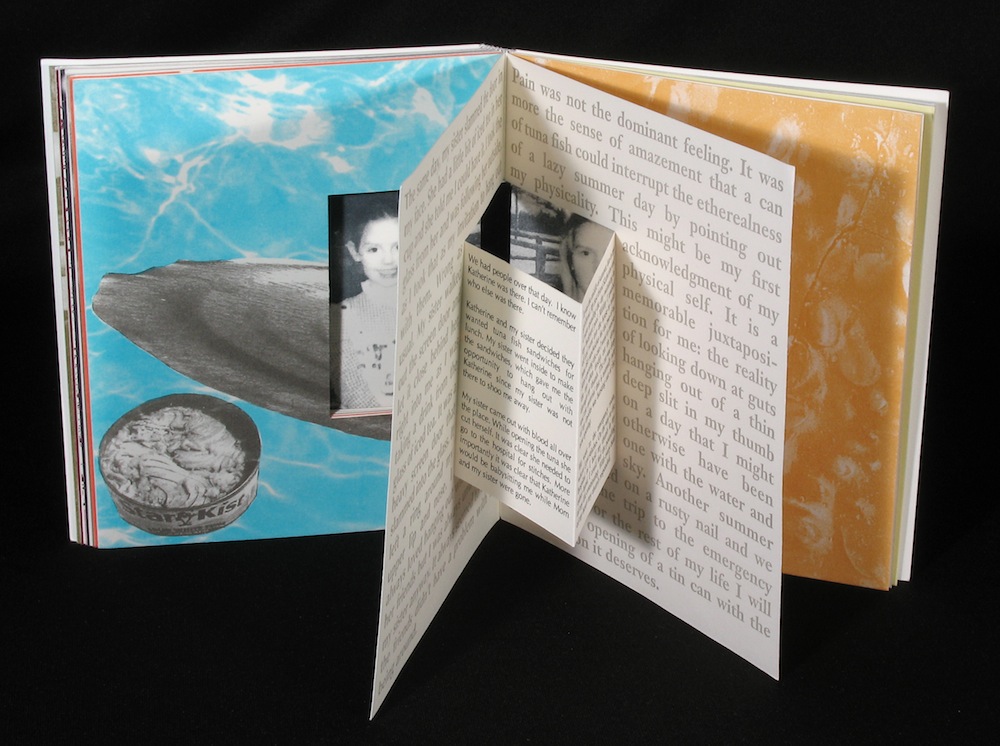The Feminine Touch
Women and the Work of the Book
Checklist for "The Feminine Touch: Women and the Work of the Book"
Curated by Luise Poulton, 2009
Exhibition poster designed by David Wolske, 2009
Digital exhibition produced by Alison Elbrader, 2011
Format updated by Lyuba Basin, 2020
Throughout history women have been involved in every aspect of bookmaking. The work of the book provided women opportunities for spiritual fulfillment, artistic expression, political participation, and financial security as illuminators, illustrators, papermakers, printers, booksellers, bookbinders, and publishers. Women produced beautiful manuscripts, world-changing works of literature and law, seditious political tracts, commercial bindings, and evocative fine press editions. From the practicalities of folding and sewing to the innovation of presswork to the creativity of the artists' book, the feminine has touched the most important vessel of human communication.
Illuminators
Women played an early role in medieval manuscript production as scribes, bookbinders, and illuminators. Several are known to us: Claricia, a twelfth-century illuminator in Augsburg, Germany, most likely a lay person; Diemud (1057-1130), a nun of the Cloister in Wessobrun in Bavaria; Guda, a twelfth-century nun; Herrad of Landsberg (1125-1195), Abbess of Hohenburg; Bourgot, a fourteenth-century professional French illuminator. Hildegard von Bingen (1098-1179), a Benedictine nun and abbess is believed to have illustrated at least one work. By the thirteenth century, most manuscripts were produced in commercial workshops, where women worked as artists and scribes. Illumination continued throughout the transition from manuscript to printing. The art was re-emphasized during the Arts and Crafts movement of the early twentieth century.
FACSIMILE COMENTARIO AL APOCALIPSIS
Beatus, Saint Presbyter of Liebana (d. 798)
Milan: Edilan, 1975
BS2825 B43 1975
This manuscript consists of commentaries on the Book of Revelations edited by Beatus of Liebana. Beatus, a priest and monk of the Abbey of Santo Toribio, gathered commentaries by Jerome, Augustine, Ambrose, Fulgentius, Gregory, Tyconius, Irenaeus, Apringius, and Isadore of Spain. The first copy was produced in 776. The work served mainly as a spiritual reading for monks. Beatus revised his text in 784 and again in 786. With his final revisions, Beatus transformed his text into an attack on heresy. Emigrants from the Iberian Peninsula spread Mozarabic style, found mostly in religious works, northward into Europe. Mozarabic style had a direct influence upon Romanesque and Carolingian art. The illuminations in this work show the assimilation of the two traditions. The tenth-century manuscript contains some of the earliest known examples of book illustration by a woman, a nun named Ende, who lived in northwest Spain.
Harriet Robarge, Grace Knights, Abby Blackmar for the Roycroft Press
Elbert Hubbard founded the Roycroft Press as part of his socialist-slanted approach to manufacturing. Hubbard produced moderately priced books of simple and elegant design, using mostly mechanized processes with a hand-crafted touch. Hubbard’s philosophy embraced the concept of equality between genders. Many women worked as book makers for the Roycroft press. Hubbard actively promoted opportunities for women within his attempted utopian setting. What might be considered idealism on his behalf, however, must be tempered with the knowledge that women, who had few professional options, were a source of cheap labor. Hubbard’s press did provide women artisans with work as printers; book designers, decorators and binders; and calligraphers.
East Aurora, NY: Roycroft Shop, 1900
PS2042 C5 1900
Illuminated by Harriet Robarge. Edition of nine hundred and forty copies. University of Utah copy is no. 763, signed by Elbert Hubbard and Harriet Robarge.
Title and text within ornamental borders, illuminated by Grace Knights. Text and blank pages alternating in pairs. Bound in limp vellum with stamped, gilted leather label on front cover. The plates for this book were destroyed after printing was completed. Edition of one thousand copies, signed by Elbert Hubbard and the illuminator. University of Utah copy is no. 402.
Illumined by Abby Blackmar. University of Utah copy is author’s signed presentation copy to Dick Morris.
Leonore Brewer for Torch Press
Founded by Luther A. Brewer (1858-1933) in 1907, Torch Press is perhaps best known for its series of Christmas books. Brewer began the tradition in 1912 when he published a small volume of seventy copies which were distributed to his friends, those of the press, and those of his beloved wife, Elinore, who added illuminated letters for many of the publications. With the exception of two years, 1918 and 1934, the series continued until 1959.
Frontispiece and title designed, etched, and printed by Charles Butler Keeler. Hand illuminated initial by Elinore Taylor Brewer. Wood engraved Christmas greeting tipped in. Edition of one hundred and seventy copies.
MARGINALIA
Cedar Rapids, IA: Priv. print. for the friends of Luther Albertus and Elinore Taylor Brewer, 1926
PR4813 B73 1926
Hand illuminated initial by Leonore Brewer. Vellum spine with grey boards. Edition of three hundred copies.
Dorothy Allen for The Allen Press
Founded in 1939 as the Press of Lewis and Dorothy Allen, its pressmark depicted a male and female figure, framed within the name of the press. The Allens changed the name of their press to The Allen Press and dropped the early pressmark, but their work together continued, establishing one of the premier American fine presses. Although the Allens became known for their use of multiple, richly colored inks, Dorothy Allen hand-colored many of the decorations and illustrations in their books.
THE HIDDEN TREASURES : OR, THE ADVENTURES OF MAITRE CORNELIUS
Kentfield, CA : The L-D Allen Press, 1953
Z232.5 A5 B35
Illustrated with wood-engravings by Mallette Dean and illuminated by Dorothy Allen. Edition of one hundred and sixty copies.
THE NOBLE KNIGHT PARIS & THE FAIR VIENNE TRANSLATE DOUTE OF...
Kentfield, CA : The Allen Press, 1956
Z232.5 A5 N63
Illustrated with wood-engravings by Mallette Dean, hand-colored by Dorothy Allen. Edition of one hundred and thirty copies.
Claire Van Vliet for Janus Press
Claire Van Vliet created Janus Press in 1955, publishing a book with her own wood-engravings. She apprenticed in Europe as a hand typesetter while teaching herself etching. In 1966, she created a permanent home for Janus Press in Vermont, where she designed, illustrated, type-set, printed and bound most of the presses publications. Many of the nearly one hundred books from Janus Press were produced on paper handmade by Van Vliet. She led the way in the use of colored paper pulps for book illustration and invented innovative non-adhesive book structures. She is the recipient of a John D. and Catherine T. MacArthur Foundation Prize Fellowship and an Ingram Merrill Foundation award. She was awarded an honorary Doctor of Fine Arts from the University of the Arts in Philadelphia.
ST. FRANCIS PREACHES TO THE BIRDS
Newark, VT: Janus Press, 1978
Z232.5 J36 S37 1978
Hand-colored relief cuts by Peter Schumann. Type is Neuland by Rudolf Koch and Awt Rugged. Printed on double leaves of Promatco Antique Endleaf. The binding can be unscrewed so that the whole can be displayed. Edition of one hundred copies.
SANCTAE HILDEGARDIS CIRCULUS SAPIENTIAE (CIRCLE OF WISDOM)
Newark, VT: Janus Press, 2001
Z232.5 J36 H55 2001
Hildegard von Bingen, medieval visionary abbess of the Rhine, began writing music, untaught, by 1140. According to Hildegard at least some of the pieces were heard in visions. The Symphony of the Harmony of Celestial Revelations was completed around 1158. Seven sheets of pulp-painted paper, made by Claire Van Vliet, contain pop-ups that illustrate the spirit of the music. The sheets are stitched together with paper strips. The cover has a circular pattern repeating the title in Hildegard's secret alphabet. The book fits into a chemise of bargello patterned linen, lined with handmade paper with a pocket of Barcham Green Nefertiti to hold program notes, an interlinear translation of Hildegard’s Latin lyrics, and a CD of Hildegard’s Circle of Wisdom. The slipcase is covered with drummed-on Barcham Green Renaissance IV. Edition of one hundred and twenty copies. University of Utah signed “...for the University of Utah” by the artist.
Mothers, Wives, Daughters, Sisters, Widows, Aunts
Iolande Bonhomme
Thielman Kerver began operating a printing press and bookshop in Paris, arriving there from Coblenz in 1471. He quickly became known for producing books of superior quality in woodcuts and presswork, most notably in his various editions of Books of Hours, many of which contained hand-painted miniatures and initials. Kerver’s widow, Iolande Bonhomme, took over the press when he died in 1522. Bonhomme was the daughter of the French printer Pasquier Bonhomme, who produced the first printed book in France in 1477. She continued to produce liturgical books until 1556, specializing in reprinting Thielman’s earlier publications which remained in demand after his death. By this time, the press used metal as well as wood cuts for its ornamentations.
Parisijs: Erossicina libraria Jolande bohome, vidue spectabilis viri Thielmanni Keruer, M.D. lij [1551]
BS1425 L3 1551
Large woodcut device of Thielman Kerver on title-page, large woodcut of Christ on verso of R4, second large Kerver device on H4 verso of the second part. Decorative woodcut initials, text in black and red. Bound in contemporary roll-tooled pigskin over wooden boards, edges stained blue. Paper spine label with title in manuscript. Remains of clasps and leather ties. Old ink notation on front pastedown, rubberstamp of a German library.
Catharine Dammers Flach Knobloch
Printer Jean Knobloch from Zofingen in Switzerland, arrived in Strasbourg in 1501. He began working in the print shop of Martin Flach and eventually married Flach’s widow, Catherine Dammers. From Martin and Catharine’s small print shop, they built what would eventually become the largest printshop in Strasbourg at the time. They published nearly three hundred titles between 1503 and 1519.
Argentorati: in officina Knoblochiana per Georgium Machaeropioeum, 1543
First German edition
NA2515 V73 1543
Vitruvius was a Roman architect and engineer. It is possible that he served as a soldier under Julius Caesar, most probably as an army engineer. His “Ten Books of Architecture” is the only surviving work on architecture from classical antiquity. Vetruvius based his own understanding of architecture on ancient Greek writings which did not survive beyond the classical period The original illustrations were long lost by the time the first printed edition was produced. New illustrations were added to the sixteenth century editions, beginning in 1511 in Venice. The woodcuts were based upon the descriptions in the text and surviving Roman ruins. Illustrations included a rock quarrying scene, a flooded city, and transportation of building materials. While the book was an inspiration for Western European architecture, Vitruvius also wrote about landscape architecture and town planning. His holistic approach to architecture (“The architect must not only understand drawing, but music”), included a treatise on human form, a theory that would be immortalized by Leonardo da Vinci’s drawing of the “Vitruvian man.” University of Utah copy with neat marginalia in later hand in Latin and Greek throughout.
Alice Warren
Thomas Warren’s wife, Alice, ran his printing business after he died in 1659 until 1664 when her eldest son, Francis, was freed from his apprenticeship. Between 1660 and 1664 her name appeared in nine imprints and she entered four works in the Stationers’ Register (one of them calls her “Master” Alice Warren).
London: Printed by T. Warren, for W. Lee, 1654
JX2093 E5 1654
Sarah Griffin
Sarah Griffin (fl. 1653-1673) came from a family of printers which founded its business in 1590. Sarah’s husband, Edward II, had printed in partnership with his mother, who had taken the reigns of the family press after the death of his father. Sarah took over the press at the death of her husband. Sarah’s son did not follow the family trade, but became a bookseller and publisher.
This ‘Resuscitation’ of Bacon’s works contains speeches he delivered in Parliament and elsewhere; a discourse on the union of England and Scotland; advice, letters, and propositions to Queen Elizabeth; other letters written during Elizabeth’s reign; and Bacon’s confession of faith. These speeches, letters, and other written sources document Bacon’s political life and career. The ‘Tractates,’ previously unpublished, was compiled by Bacon’s chaplain, editor, and executor, William Rawley (1588?-1667). Aside from Bacon’s work, the volume contains Rawley’s “Life” of the Lord Chancellor, a portrait that became the foundation for all subsequent biographies of Bacon. The paper for this book was made in Morlaix, south of Paris. The watermark is made up of a plain and simple monogram, ‘P.Huet.’ Because of cheap labor, Morlaix paper was inexpensive and was imported from Brittany to England beginning about 1629 for many years with great regularity.
London: Printed for S. Griffin, R. Scot, T. Basset, J. Wright, and R. Chiswel, 1678
Eleventh edition
BM700 G6 1678
University of Utah copy gift of Judaica Associates.
Anne Maxwell
London printer Anne Maxwell (fl. 1665-75) was the widow of David Maxwell (fl. 1659-65). She produced one hundred books between 1660 and 1684. Listed as a master printer in a 1668 survey of London printing presses, she inherited and managed two presses, employed three typesetters and three pressmen. Between 1668 and 1690 she supervised and trained twelve apprentices.
Criticism and interpretation of the Old Testment Song of Solomon. University of Utah copy lacks title page.
Elizabeth Holt
Elizabeth Holt spent her married years by her husband Ralph Holt's side, learning all aspects of the printing trade. She carried on her husband’s business after his death, running it for fifteen years before her daughter Sarah took over, who, in turn, maintained the family print shop for another twenty-five years.
London: Printed by Elizabeth Holt for Thomas Basset, 1690
First edition, first issue
B1290 1690
From 1763 to 1776, John Locke was especially popular reading among English colonists in North America. Locke applied an Anglo-Saxon penchant for facts to the study of philosophy (a field long dominated by speculative enquiry) and concluded that most knowledge emanated from experience. His Essay was twenty years in the making. He completed the initial draft in 1671, but was unable to work on it further until his escape to Holland in 1683. Final revisions were completed by the time he returned to England in 1689. Although Locke had been uncertain about the book’s reception, it quickly ran through several editions. University of Utah copy bound in contemporary paneled calf.
Jane and Tace Sowle
Although most 18th century businesses in England were officially operated only by men, women took a full share in the work, particularly if they were members of a printer’s family. Jane Sowle worked side by side with her husband, Andrew, who apprenticed for seven years, beginning in 1646, with printer Ruth Raworth, who was a member of a family of printers. Jane and Andrew’s daughter, Tace, learned the printing business from her mother and father, whose onset of blindness prevented him from printing. Tace became a good compositor, skilled in setting type. Jane and Tace ran the press for more than fifty years, into the 1740s. They published many works by women. Tace married a non-stationer, Thomas Raylton, who soon became a printer. Tace and Thomas worked under the name of Tace’s mother, “Assigns of J. Sowle.” Tace’s sister, Elizabeth, married her father’s apprentice, William Bradford, and traveled with him to America, where they set up a print shop in Pennsylvania and later in New York. Tace and Thomas had no children. Tace’s nephew apprenticed with her, eventually inheriting the family business.
University of Utah copy bound with New-England Judged, by the Spirit of the Lord, London, Printed and Sold by J. Sowle, in White-Hart-Court in Gracious-Street, 1703.
Lydia Bailey
Lydia Bailey (1779-1869) married the son of printer Francis Bailey. She took over her husband Robert’s printing business after his death in 1808. Supporting herself and her four children, she ran the business, learned to set type and, as she wrote, instructed “forty-two young men, including some of the city’s future master printers, in the typographic arts.” She was commissioned “City Printer of Philadelphia,” and served in that capacity for nearly fifty years.
Philadelphia: Published by M. Carey and son. For the benefit of the children of John Reid Lydia R. Bailey, printer, 1817
E382 E11
Rebels
Martha Simmons
Bookseller Thomas Simmons, publisher of works by George Fox, was the husband of the Quaker minister Martha Simmons, author of several published tracts and famous for her involvement in the Quaker leader James Nayler’s entry into Bristol in the guise of Christ entering Jerusalem. Martha’s works were published by her brother Giles Calvert, a leading radical publisher. Calvert’s shop was run, after his death, by his widow Elizabeth Calvert, who continued as publisher of radical and republican works after the Restoration, despite continued harassment by the authorities. Hannah Allen, a stationer’s widow who married her apprentice Livewell Chapman, and Martha Simmons were two of several women who were instrumental in keeping alive the opposition press in mid-seventeenth-century England after male confederate stationers’ were silenced by execution, imprisonment or illness.
London: printed by M. Simmons, 1645
BV649 C67 1645
Clergyman John Cotton spent twenty years as vicar of a wealthy parish in Boston, Lincolnshire, England. Summoned to appear before the High Court of Commission in 1632, he resigned his post and fled to Massachusetts Bay in 1633, bringing several followers with him. The city of Boston was so named in his honor. Cotton and John Winthrop were the leaders of the young Massachusetts colony. Cotton’s daughter was the wife of Increase Mather and the mother of Cotton Mather. His theological arguments in several treatises such as The Way of the Churches were well known and highly influential in England and the New England colonies.
Ann Baldwin
Ann Baldwin (fl. 1698-1711) was active in all aspects of her husband Richard’s printing business, from accounting to editorial decisions. In 1698, after her husband’s death, she took over the business. The Baldwin’s were politically active, often in trouble for printing “anti-Stuart, anti-French, anti-Papal” tracts. The trouble did not stop Ann from continuing to publish the same sorts of material upon the death of her husband. She published two hundred and thirty-seven pieces after his death. Ann expanded the business’s scope, publishing tracts concerning social welfare.
London: A. Baldwin, 1711
Fourth edition
D281 H37
University of Utah copy bound with Hare, Francis, The management of war. In a letter to a Tory-member, London: Printed for A. Baldwin, 1711 Fourth edition xD281 H37 Also bound with The Negociations for a Treaty of Peace, in 1709. Consider’d In a Third Letter to A Tory-Member, 1711; and The Negotiations for a Treaty of Peace from The Breaking off of the Conferences at the Hague, to the End of those at Gertruydenberg, Consider’d In a Fourth Letter to a Tory-Member, 1711
Booksellers
Mary Cooper
Mary Cooper was an eighteenth-century London bookseller who often commissioned the printing of books to be sold in her own shop.
London: Printed for R. Dodsley and sold by M. Cooper, 1751
PR3339 C125 S37 1751
Engraved frontispiece.
London: Printed for R. Dodsley, and sold by M. Cooper, 1752
PR3339 C125 D5
Horace printed in Latin and English.
London: Printed for M. Cooper, 1756
BJ1520 B87 1756
Designers
Margaret Armstrong, Rachel Robinson, Sarah Wyman Whitman
The late 19th and early 20th century saw a renewed interest in quality commercial publishing book design, particularly in binding board design, jacket covers and illustration. Many women participated in this energized recognition of book design as part of the marketing of books. Now referred to as the “golden age” of commercial cover design, women provided covers that were pictorial, figurative and decorative. The cover designs are smart but delicate; bold but simple; evocative in their representation of the text within. Many of the designs contain the initials of the artists.
Cover design and illustrations by Rachel Robinson.
Cover design by Margaret Armstrong.
New York: C. Scribner’s Sons, 1911
PS3117 F58 1911
Cover design by Margaret Armstrong.
Literary Types
Anna Simons and Frieda Thiersch for Bremer Presse
In 1911, Bremer Presse began book production in the country home of author Thomas Mann (1875-1955), moving to Tolz in 1918, and finally to Munich in 1939 where it continued production until 1944 when its presses and library were destroyed by Allied bombs. The model for Bremer Presse was Doves Press in England, following it’s typographical and design standards. Bremer Presse was run under the literary direction of Ludwig Wolde. Its master printer was Willy Wiegand, who had the help of Rudolf Alexander Schroder, Hugo von Hofmannsthal, and Rudolf Borchardt. Anna Simons created initial and title-page designs, Josef Lehnachker created woodcuts, and Frieda Thiersch worked as book binder.
Faust was printed using a proprietary type (an Antiqua) designed for Bremer Presse by the director of the press, Willy Wiegand. The font was cut in Frankfurt by Louis Hoell, a typecutter who cut many types for designers in the heyday of German printing in the early twentieth century. The two sat side by side for days, cutting, filing, and proofing the font. Edition of two hundred and seventy copies. University of Utah copy is no. 8.
ICONES ANATOMICAE
Monachis: ex officina Bremensi, 1934
QM25 V4 1934 oversize
The woodblocks for Vesalius’ monumental anatomical works were one of the great discoveries – and losses – of the twentieth-century book world. The blocks had at some point been moved from Basel to Augsburg, where a few of them were published in the early eighteenth century. Later that century another move occurred, many of the blocks appeared in another work published in Ingolstadt. The Library of the University of Ingolstadt acquired the blocks, and in 1826 they were moved to the University of Munich. In 1932 all of the surviving blocks – two hundred and twenty-seven – were rediscovered. For the Bremer Presse edition, the woodblocks preserved in Munich were joined by the original woodblock for the title-page of the 1555 Fabrica from the collection of the Library of the University of Louvain. The edition was designed to demonstrate to a new and wider audience the beauty of the original edition. The publication so soon after the rediscovery was particularly fortunate. The woodblocks were destroyed during WWII. This was the last book produced by Bremer Presse. Edition of six hundred and fifteen copies.
Virginia Woolf, Hogarth Press
Hogarth Press was founded in 1917 by Leonard and Virginia Woolf as a distraction from the pressures of writing. They began printing in the dining room of their home in Surrey, England, using a small handpress. Hogarth Press soon became a small but successful commercial publishing house, although Leonard and Virginia selected what they printed strictly for themselves, their friends and acquaintances. Central figures in the Bloomsbury group, the Woolfs published new and experimental works by many relative unknowns at the time – Katherine Mansfield, T. S. Eliot, Robert Graves, E. M. Forster, John Maynard Keynes, Vita Sackville-West, and, of course, themselves. They also published first English translations of contemporary foreign works. Their press provided artistic avenues for photographers, illustrators, and designers. The Woolfs published thirty-four titles before 1932, all in letterpressed editions. In 1938, Virginia gave up her interest as a business partner.
London: Printed and published by Leonard and Virginia Woolf at the Hogarth Press, 1924 PS2123 B67 1924
PS2123 B67 1924
Hand printed by Leonard and Virginia Woolf. Edition unknown but according to publisher ledger 544 copies were sold by January 19, 1926. Cream paper wrappers printed in green
SENLIN : A BIOGRAPHY
London: Published by L. and V. Woolf at the Hogarth Press, 1925
PS3501 I5 S4 1925
Nancy Cunard, Hours Press
Hours Press was founded in 1927 by Nancy Cunard, an ex-patriot from the English upper-class. Cunard, who began writing poetry in the 1910’s, settled in Paris after World War I. There she became involved in the Dada, Surrealist, and Modernist movements. Cunard began printing in an old farmhouse in La Chapelle-Reanville, Normandy. She specialized in publishing writers who were having a difficult time being recognized elsewhere. Hours Press closed after four years. Nancy Cunard became involved in the civil rights movement in the United States, collecting writings by and about African-Americans, which she then edited and published in the anthology Negro in 1934. From 1936-1939 she lived with Pablo Neruda in Madrid. Cunard died in Paris in 1965.
THE EATEN HEART
Chapelle-Reanville, Eure, France: The Hours Press, 1929
PR6001 L4 E3 1929
Richard Aldington was one of the first three Imagist poets, along with Ezra Pound and H.D. In 1912, the three poets established a set of principles to guide their writings. Pound later reported these as “1. Direct treatment of the ‘thing’ whether subjective or objective. 2. To use absolutely no word that does not contribute to the presentation. 3. As regarding rhythm: to compose in the sequence of the musical phrase, not in the sequence of a metronome.” This is the fourth book printed by Hours Press. Edition of two hundred copies, signed. University of Utah copy is no. 60.
LAST STRAWS
Paris: Hours Press, 1930
First edition
PR6001 L4 L3 1930
Poet Richard Aldington’s experience in military active duty during World War I had a great influence on his writing, which would become savagely satirical. Edition of seven hundred copies, the first two hundred of which are printed on Haut Vidalon paper and signed by the author. University of Utah copy is no. 23.
POEMS
Paris: Hours Press, 1930
First edition
PR9369.3 C35 P59 1930
Born in South Africa, Roy Campbell said that his lengthy and lyrical poetry was influenced by the Zulu language, which he learned as a child. His friend Wyndham Lewis shaped the character of Zulu Blades after Campbell in his novel, The Apes of God. Hand set and letterpress printed. Edition of two hundred copies, signed by the author.
THE TALKING PINE
Paris: Hours Press, 1931
First edition
PR5042 T3 1931
George Moore’s father died when Moore was just eighteen, leaving him with an estate large enough to have the leisure to pursue his artistic, literary, and philosophical interests. He spent the next several years in Paris before returning to London. In 1901 he moved to Dublin where he contributed to the beginnings of the Irish Renaissance. It was during this time that he developed his modernist form. He settled in London, where he remained for the rest of his life. Hand set and letterpress printed on Maillol handmade paper. Edition of five hundred copies. University of Utah copy is no. 70.
Violet Trovillion
Trovillion Private Press was founded in 1908 by Hal and Violet Trovillion in Herrin, Illinois. The couple focused on reprinting somewhat obscure texts from the fifteenth and sixteenth centuries. They printed fifty titles between 1908 and 1958. Inspired by the work of publisher and printer Thomas Bird Mosher, who was recognized by his contemporaries for his use of fine paper, beautiful design, and modest pricing, the Trovillion’s began publishing under the name “At the Sign of the Horse.” They maintained a lively friendship and extensive correspondence with other American publishers and many writers, including Daphne du Maurier and John Cowper Powys. The Trovillion’s printer’s device consists of a combination of three pieces: the bowpiece recognizes the Venetian gondolas Hal Trovillion admired while on a trip to Italy; a swimming horse; and the fleur-de-lys, first connected with printing as a watermark on Italian paper made in 1314 and a compliment to Violet’s French descent.
THE TUSSIE MUSSIES : A COLLECTION OF FLOWER AND GARDEN...
Herrin, IL: Trovillion Private Press, 1941
Second edition, enlarged
PN6110 F6 T7 1941
Edition of four hundred and eighty-seven copies, signed and numbered. University of Utah copy is no. 39.
Kate Roberts
Kate Roberts was a Welsh-language author of the twentieth century. She was married to printer Morris T. Williams. They bought the Gwasg Gee printing house. When Morris died in 1946, Kate worked the press for another ten years. Grief over the death of her brother in the First World War led Roberts to writing. Most of her work is set in north Wales, where she grew up. She wrote mainly about humble people struggling with poverty but overcoming, nonetheless, difficulties and disillusionment. She used themes such as the role of women in society. She belonged to the Welch nationalist party. The progressive ideas from that movement are major themes in her work.
TWO OLD MEN AND OTHER STORIES
Newtown, Powys, Wales: Gwasg Gregynog, 1981
PB2298 R63 A28 1981 ARC
Published in celebration of Kate Robert’s ninetieth birthday. Translated from the Welsh by Elan Closs Stephens and Wyn Griffith. Introduction by John Gwilym Jones. Designed and printed by Eric Gee, assisted by David Vickers. Illustrations by Kyffin Williams, printed direct from linocuts. Typeface is 14 pt Monotype Bembo, machine-set and put through the stick. Edition of two hundred and sixty-five copies, numbered. Copies I to XV printed on paper made specially by Wookey Hole Mill, with frontispiece hand-colored by the artist. Copies 1 to 250 printed on Zerkall mould-made paper. University of Utah copy is no. 145.
Illustrators
Helen Marguerite O’Kane, Elston Press
Helen Marguerite O’Kane and her husband, printer and illustrator Clarke Conwell, began Elston Press in the last decade of the nineteenth century. Inspired by William Morris, they emphasized quality in design and printing. Their overall production of their books was somewhat controversial. Early critics called their style ostentatious. Others argued that the books carried well the use of bold, striking type and heavy, ornate illustration.
For the poem, “In Praise of My Lady,” a poem that William Morris wrote for his wife, illustrator Helen Marguerite O’Kane portrays a languid couple in medieval dress lying in a meadow by a stream that flows out of a wooded background. The binding is cream-colored boards covering a French fold format. The typeface is Satanick. Edition of five hundred numbered copies printed on Old Stratford paper and two hundred and fifty numbered copies printed on Imperial Japanese paper. University of Utah copy is no. 37 on Imperial Japanese paper.
Originally published in 1859, this was William Morris’s first published poem in book form. The poem, about the reaffirmation of a doubted faith, was illustrated by Helen Marguerite O’Kane and printed in black and red by her husband, Clarke Conwell. Decorated borders and two full-page pictures illustrate the text. Printed on handmade paper. Bound in full green crushed morocco. The spine is gilt with raised bands decorated with gilt borders with floral designs. Leather inlays are on the front and back covers. Gilt also borders the inside covers over marbled endpapers. Edition of one hundred and eighty copies.
Gwen Raverat
Gwen Raverat illustrated Frances Cornford’s Spring Morning (1915), Laurence Stern’s A Sentimental Journey (1932), and Charlotte M. Yonge’s Countess Kate (1948). She is perhaps best known for Period Piece, her memoir of her childhood. Raverat was the granddaughter of Charles Darwin.
THE WOOD ENGRAVINGS OF GWEN RAVERAT
London: Faber and Faber, 1959
First edition
NE1217 R3 A4 1959
A comprehensive collection of the wood engravings of illustrator, painter, designer, and author Gwen Raverat. Bound in charcoal cloth with spine stamped in green and gilt covered in dust jacket.
BOOK ARTISTS
Bad changes
Oakland, CA: Peripatetic Press, 1986
PS3563 A31145 B3 1986
Pochoir, or stencil-applied color, has been used since the European Renaissance, when German stencil artisans colored popular prints such as playing cards and religious broadsides. Their Japanese peers, then and now, used a stencil-printing method to color paper. In the early nineteenth century a London publisher employed European émigrés to fill in pre-printed line illustration. A century later, fashion designer Poiret used French orphan girls to color luxurious advertisements for garments and interior decorating products. In the early twentieth century pochoir was used in sophisticated children’s books during the Great Depression. It is a time-consuming process and thus connected with cheap labor and luxury editions. In the 1970s, book artists began to turn to this technique as a method for producing unique editions. Ruth McGurk used this process in several of her editions in the 1980s. Edition of thirty-five copies. University of Utah copy is no. 10.
CANNIBAL ANTS
Santa Cruz, CA: Peripatetic Press, 1996
PS3563 A31145 C36 1996
Edition of 50 copies. University of Utah copy is no. 10.
QUEEN OF WANDS : A PAPER SCULPTURE
Rosendale, NY: Women’s Studio Workshop; Santa Monica, CA: Paradise Press, 1993
N7433.4 K5 Q84 1993
Issued in clear plastic envelope with seal bearing title and author. Two cards are enclosed which bear publication information and instructions for operating. Paper construction uses the tetra-tetraflexagon form. Printed offset by Paul Muhly.
TRULY BONE : POEMS
Rosendale, NY: Women’s Studio Workshop; Lincoln, NE: Blue Heron Press, 1998
PS3568 A97 T78 1998
Two attached sheets, folded accordion style into twenty pages attached front and back to tan-colored endpapers. Sheets and endpapers are within tan and beige-colored wrappers with flaps. Text is letterpress printed in black typeface. The type is Romulus 11 point. Images are etching, aquatint spit bite, and drypoint from multiple copper plates using sixteen colors. The paper is cream Italian Alcantara. The production of this book was supported in part by the National Endowment for the Arts, the New York State Council on the Arts, and the Research Council, University of Nebraska at Lincoln. Book production by Karen Kunc with the help of interns Ryan Ninete and Lynda Sock. Edition of fifty copies, signed by the poet and Karen Kunc. University of Utah copy is no. 47.
SHARED MEMORIES
New York State: Women's Studio Workshop, 1998
N7433.4 S691 S53 1998
Short prose pieces on a simple pop-out structure. Illustrated with photographic images. Handbound and issued in paper slipcase. Edition of 90 copies. University of Utah copy is no. 30, signed by author.
BOOK OF MYTHS AND FATES
New York?: Women’s Studio Workshop, 2001
N7433.4 D535 B6 2001
Inspired by three characters in Sophocles' ancient Greek tragedy, Oedipus Rex. The Oracle, Jocasta, and Oedipus correspond respectively to the spiritual, sensual and intellectual elements of the human experience. Three sections illustrate each state. In each section, the pages fold out from a central pair of black and white images. Digitally printed. Bound with a soft, wrap-around cover. Edition of eighty copies. University of Utah copy is no. 26.

